Title: 日出処の天子; Hi Izuru Tokoro no Tenshi
Mangaka: 山岸凉子 Yamagishi Ryōko
Serialisation period: 1980~1984

Hi Izuru Tokoro no Tenshi, serialised in LaLa (Hakusensha) from 1980 to 1984, is considered to be one of mangaka Yamagishi Ryōko’s (member of Year 24 Group) best works (and also a controversial one).
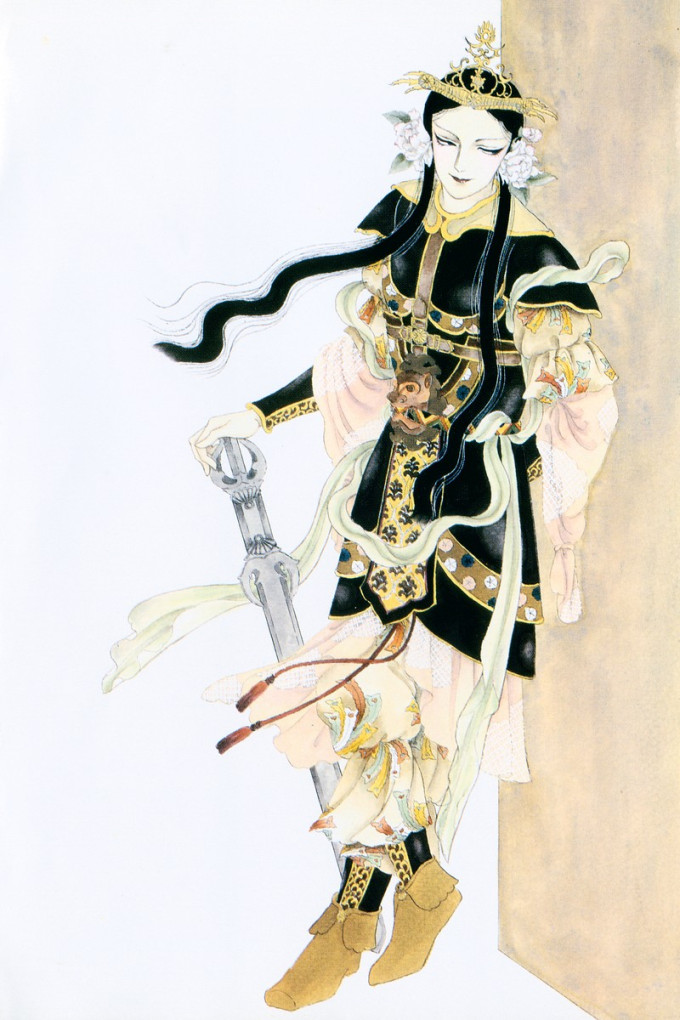
Seamlessly combining the themes of religion (specifically Buddhism), supernatural powers, politics and homosexuality, Hi Izuru Tokoro no Tenshi tells a tale of one of Japan’s most famous historical figures, the semi-legendary Umayado no Ouji, known posthumously as Prince Shōtoku. The eldest son and child of Toyohi no Ōe (later Emperor Yomei) and his half-sister Anahobe no Hashihito no Himemiko, Prince Shōtoku then went on to become regent and crown prince during the reign of his aunt, Empress Suiko (officially the first female on the throne in Japanese history). Most importantly, Prince Shōtoku is recognised as a founder of Japanese Buddhism, as he fervently sought to propagate Buddhism in early Japan.
As accomplished as he may had been, Hi Izuru Tokoro no Tenshi isn’t a work meant to solely glorify Umayado no Ouji’s achievements – it is a fictionalised account of how his teenage years may have been like had he been gifted with supernatural abilities and in love with his retainer, Soga no Emishi. Although this manga spans from the time when the Ouji is about ten to when he’s about twenty, it may be unfair to consider this bildungsroman, as the work isn’t so much focused on his development and maturation – since Umayado no Ouji had already been an exceptionally mature person to begin with.
※Spoilers ahead.
Synopsis (adapted from wikipedia.ja)
Set in the Asuka period (538 to 710), Hi Izuru Tokoro no Tenshi first introduces us to the Soga household. On a day in spring, the 14-year-old Soga no Emishi makes a trip down to Yatachi Pond, and meets a young girl so beautiful she could be mistaken for a heavenly nymph. He falls in love, but unbeknownst to him, that ‘girl’ is Umayado no Ouji, who had barely turned 10. Despite being young, Umayado no Ouji is smart, talented and gifted with political astuteness in addition to supernatural powers. However, because of his uncanny abilities, he is shunned and alienated by his mother, Anahobe no Hashihito-hime, out of fear. The only other person who is aware of the Ouji’s abilities, Emishi, often feels hurt for the Ouji because of the loneliness the Ouji has to endure as a result of his gift. As a person who Umayado no Ouji discovers to be able to share his powers, Emishi’s existence becomes indispensable to the prince. However, Emishi is only able to use his power unconsciously, and because of that, he is not aware of his abilities. Before long, Umayado’s feelings for Emishi develop from attraction into love. Emishi also realises that he is drawn to the prince, but soon falls in love with a shrine maiden of Isokami Shrine, Futsuhime. Out of jealousy (especially so since Emishi is the closest person the Ouji has), the Ouji devises a scheme to get rid of Futsuhime once and for all, but his plan is noticed and later intercepted by Emishi, who, up till that point, has been perceptive of matters that involved the Ouji’s strategies. Unfortunately for the Ouji, Emishi eventually chooses Futsuhime over him.

The fictional rendering of Umayado no Ouji
It is difficult to not fall in love with the Ouji while reading this piece of work. He’s a multi-faceted character – the reader would be charmed by his stoic, all-knowing persona and find his affectionate side endearing, too.
The fact that the Ouji has an androgynous appearance is pretty much set in stone right from the get-go: from the moment Emishi first meets him. Though Yamagishi’s rendering of the prince can’t be any more different from the widely-circulated portrait of the real Ouji on the Internet, the androgyny of the prince is a character setting Yamagishi uses to ground the plot she devised for her work. Throughout the story, there are many more incidents where the Ouji crossdresses in order to thwart plans and control the flow of events in his favour. Such incidents include: dressing as a menowarara (the younger version of the uneme, who are court ladies) to cause monk Nichiira’s death; impersonating Moriya’s daughter to kill his uncle Anahobe no Ouji, crossdressing in order to seek shelter at Isokami Shrine where Futsuhime resides, etc.. And it’s not just that the Ouji knows he’s indeed beautiful – he recognises the potential of his sex appeal and uses it to his advantage.
As we see more of the Ouji, it appears that his existence within the family is one that is solitary and isolated – he does not show up for mealtimes, does not play with his younger brother Kume no Ouji and most certainly is not showered with affection by his mother. With time, it becomes evident that no servants seem to be around the Ouji or near his Ikebe Palace, as the Ouji supposedly “make[s] them go away”. Apparently, he seems to put on a cold front simply for the sake of protecting himself from others. He does not seem to be particularly fond of human interaction and avoids it, but that is possibly his attempt to guard himself from people as they are likely to alienate him should they find out about his supernatural abilities. However, while he is exceptionally intelligent, manipulative and astute when it comes to politics, the Ouji isn’t completely devoid of emotion (as he might appear to be to various characters). There are times in the manga where the Ouji is obviously not as heartless as he seems – he cried at his father’s death (although he was quick to compose himself and not cry before his mother, much to her disappointment) and often smiles (at times, unknowingly) at Emishi or expresses satisfaction at Emishi’s achievements. In contrast to his usual cold demeanour, the Ouji is shown to be very relaxed and even childish when he’s interacting with Emishi, expressing emotions like pettiness or embarrassment when they’re together.
The Ouji makes a solid declaration in the story: he hates women. As a teenager, he is very put off whenever the issue of him getting married is raised and almost completely has no interaction with any female, except for his mother and aunt. However, as he reaches adulthood, it is clear that the Ouji has somewhat accepted his fate of having to marry, and takes the Oohime (Nukatabe no Himemiko’s eldest daughter) and Tojiko no Iratsume as his wives. However, there is zero intimacy.
It makes one wonder if this hatred stems from the strained relationship he has with his mother. Could it be that the neglect from his biological mother had caused him to acquire disdain for women? The conclusion to the story presents to the audience a shocking revelation: the Ouji takes in a mentally-handicapped 10-year-old child bride out of his own will, when he is finally faced with the fact that his love for Emishi will go nowhere, as Emishi, while acknowledging that he is attracted to the Ouji, does not return the Ouji’s romantic feelings. Later, Emishi, upon meeting the Ouji’s young wife Hokikimi no Iratsume (also known as Kashiwadenomi no Iratsume), instantly notices how much she resembles the Ouji’s mother Hashihito no Hime and realises that the Ouji’s rejection by Emishi and his craving for his mother’s love probably drove him to a corner.
The Ouji is a force to be reckoned with, but Tansui likening the Ouji to Buddha, combined with the Ouji’s powers and genius, make him appear omnipotent, almost like a god – even the few times when the Ouji is distraught by the fact that maybe he “wasn’t human” only seemed to serve the purpose of solidifying the argument that perhaps, the Ouji really is some sort of deity with no place among the humans. But that view is ironic – the Ouji cannot be any less human than any other character in the story because he is able to experience love and is also susceptible to falling prey to the deadly sin we know as jealousy. His resentment towards Futsuhime pushes him to interfere with her life, by using his powers to prevent her rain ritual from succeeding, or by not wanting to help Emishi plead the Ookimi to not take Futsuhime as a consort, and even to the point of attempting to eradicate her, simply because she is Emishi’s object of affection.

The theme of forbidden love
Yamashiro no Ouji, officially Umayado no Ouji and Tojiko no Iratsume’s child, is represented as the incestuous offspring between the Soga siblings in this piece of work.
At that time in Japan, marriage (and by extension, intimate relations) within the family and even between half-siblings (by the same father but different mothers) were acceptable, especially since it was a means of concentrating family wealth and power. Romantic affiliation between full-siblings, however, was a definite no – it was intolerable and immoral as it is still considered today.
In the days leading up to the war between the Soga and Mononobe clans, Tojiko is sent away with her mother Toichi no Iratsume (a niece of Mononobe no Moriya), so that the two clans can sort out their feuds. Unfortunately for Tojiko, that period of time was hell for her, as she suffered sexual violation at the hands of multiple relatives from the Mononobe clan. As a result, she underwent a complete change in her personality, losing her characteristic brightness/cheerfulness, which did not go unnoticed by Emishi. Furthermore, she felt she could not love any man, except for her biological brother. She successfully evades marriage to the Ookimi (the Emperor). Later, when Emishi falls in love with Futsuhime, Tojiko begins to act on her desires, even disguising herself as Futsuhime and having sexual relations with her brother. Tojiko then becomes pregnant with Emishi’s child, before being sent to Umayado no Ouji as a bride. Emishi knows the weight of the sin he had committed and hates himself for it. He struggles a lot, trying to avoid being awkward in front of the Ouji even though his sister is about to be presented to the Ouji with an unborn child belonging to him. Umayado no Ouji, aware of Tojiko’s pregnancy, hides the fact that he knows the true parentage of the child, strikes a deal with her and marries her anyway. When the child is born, the Ouji showers him with affection and loves him as if Yamashiro were his own child.
It is interesting that the concept of incest had been used effectively in this piece of work, as it exemplifies another form of forbidden love (besides the homoromantic love the Ouji has towards Emishi, in consideration of the time setting) and also creates an opportunity for readers to witness how much the Ouji loves Emishi.
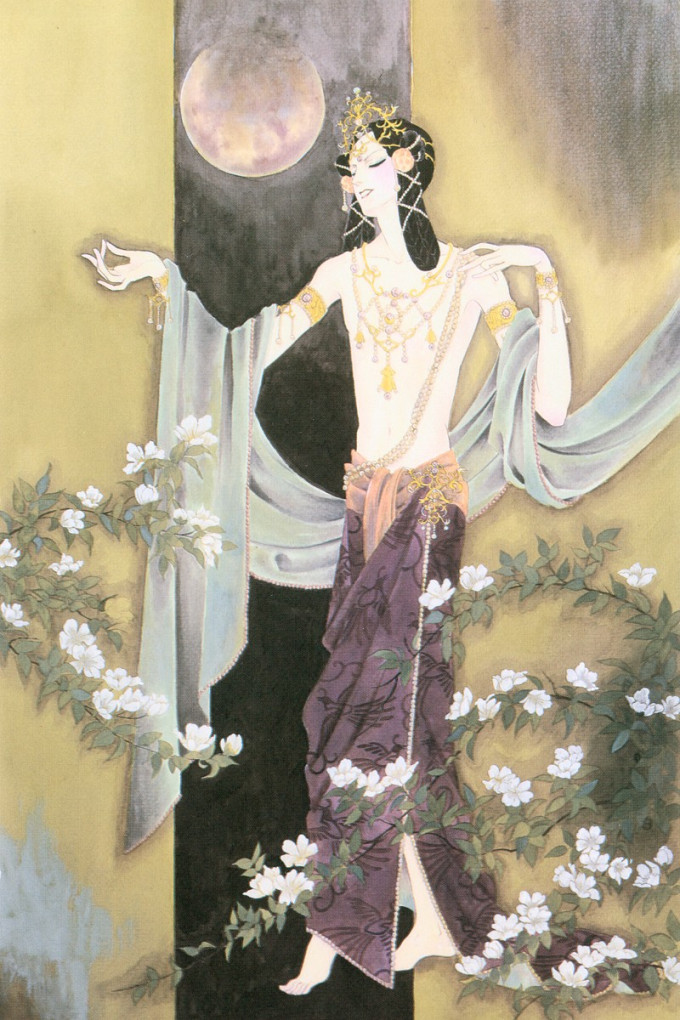
From a historical viewpoint
As the Asuka period is very old, there aren’t many artifacts or evidence besides the Kojiki and Nihon Shoki that can tell us much about the people who lived then. Prince Shōtoku is thus occasionally considered semi-legendary. That little definite records about the people and period exist also gives Yamagishi greater artistic leeway to craft her masterpiece.
Evidently, it was unlikely that any sort of love had brewed between Emishi and the Ouji, and furthermore, it is possible that the two parties weren’t on very good terms later on because of their differing opinions on the ideal candidate for succeeding Empress Suiko. Umayado no Ouji had sought to install his Yamashiro no Ouji onto the throne but Soga no Emishi had supported Tamura no Ouji, son of Oshisaka no Hikohito no Ōe and Nukate-hime, and grand-nephew of Empress Suiko. It goes without saying that the incest didn’t happen, because if Yamashiro no Ouji had been Emishi’s child, Umayado no Ouji and Emishi would likely have joined forces to put Yamashiro no Ouji on the throne. That said, this work is fiction after all.
Nonetheless, it’s amazing how the mangaka was able to think of and create various possibilities in the relationships between the characters while working around their already-established positions within the royal family tree in addition to the social and cultural constraints of that time.
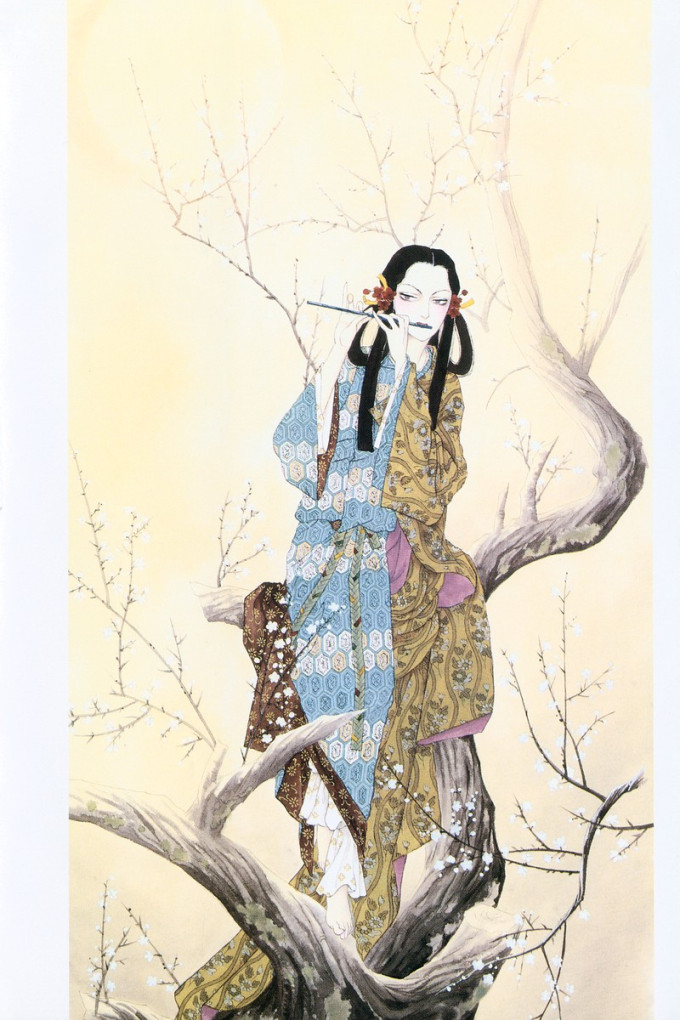
Final thoughts
It can be argued that calling the Ouji’s love ‘unrequited love’ would be slightly inaccurate. There are many instances throughout in which Emishi clearly is attracted to and likes the Ouji, even though Emishi brushes it off, saying that it’s because he had thought the Ouji was a girl during their first meeting. The love is indeed not reciprocated in the sense that Emishi has chosen Futsuhime – while it is true that he is in love with Futsuhime, it is also undeniable that there is no future in a relationship with the Ouji even if he decides to act on his feelings of attraction. One may wonder if he has unconsciously harboured feelings for the Ouji all along, but when Futsuhime comes along, he falls in love with her, completely denies his feelings for the Ouji and doesn’t give a second thought as to who he should choose, since it makes sense that as the eldest son of the Soga clan, he is duty-bound to get a wife and have children.
Both Tojiko and the Ouji love Emishi, but their love is strictly forbidden. Umayado no Ouji has it really tough though – he can’t bear Emishi’s child, while Tojiko already has. To make matters worse, Emishi has a child with Futsuhime later on.
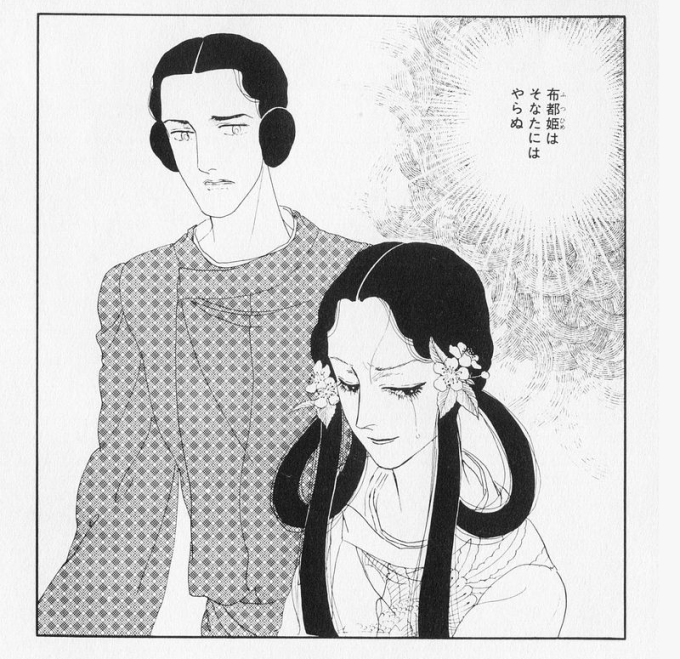
Tojiko is also a character that one would greatly have empathy for. All the sexual violation she faced by distant relatives probably pushed her to become wary of others and emotionally dependent on her brother. However, things change as she unknowingly begins to fall for the Ouji after spending time with him. The pair have an interesting relationship – as Tojiko’s personality resembles Emishi’s in some ways, the Ouji seems to be softer on her and also occasionally puts up with her childish demands. Yet the Ouji remains fixated on her brother, and she only realises much later that whenever the Ouji speaks of Emishi, she feels jealous because she’s not being given the same attention as her brother. Fate is cruel to her – the first man she loves is her brother, and the next is someone who hates women.
One significant point to note is that Yatachi Pond is where Emishi and the Ouji have their first encounter, but that also happens to be the place where they talk it out (and in a way, end their relations): the Ouji confesses, but Emishi is distraught – he has chosen Futsuhime, and as much as he does not want to hurt the Ouji he cannot choose both of them. Eventually, the Ouji, hurt by the lack of reciprocation and the realisation that he will once again be alone, decides to give up on Emishi.
This brings an ending that is twisted of sorts, with Emishi feeling guilty and regretful for not reciprocating the Ouji’s love. As he is leaving the Ouji to be alone once again, he believes that besides Hashihito no Hime, himself is to be blamed, for Hokikimi no Iratsume being wed to the Ouji. Yet, there is no way he is able to rewind time and revise the choices he made. Regretfully he has to leave the Ouji to suffer once more in desolate solitude.
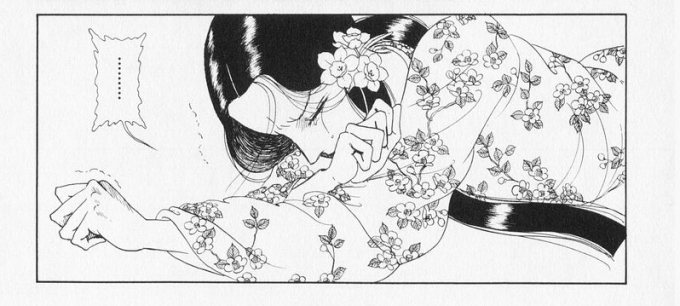
The manga concludes with a famous line from the well-known letter written by the real Prince Shōtoku to the Emperor of China. Enthusiasts and students of Asuka/Nara period history would be familiar with this very iconic phrase, which also serves as the inspiration for the title of the manga.
And the line goes: “From the Son of Heaven from the land of the rising sun to the Son of Heaven from the land of the setting sun…”
P.S.: There’s a sequel to this manga, titled Umayako no Himemiko. The titular character’s a daughter of Umayado no Ouji and Hokikimi no Iratsume/Kashiwadenomi no Iratsume. Unfortunately, it was discontinued after one volume due to its highly controversial nature.

Thank you so much for this!! I’ve been reading this again and still, there are many parts that i couldn’t understand but finally i’ve found a writing piece about this (after knowing about the manga in livejournals entries back then)
LikeLike
I’m glad to know this post has helped! 🙂
LikeLiked by 1 person
Uhm I’m sorry if this might bother you but I do want to asked some details about the incestuous part which makes me irked for a few days. I’ve been done researching about it and I think Yamagishi-sensei based a little bit on (or influenced by) the mythology of the twins Izanagi and Izanami that birthed Amaterasu though. So I wanted to read more about how incest relationship (between siblings and stuff) was forbidden back in the days, or if there was a ban on it? Can you please shed some light on this for me? What should I read if I wanted to know more about this topic? (Japanese sources are okay too I can read it). It’s okay if you don’t feel like it, i just wanted to say thank you because i really like historical themed stories and how you talked about the manga in this post 😀
LikeLike
Hello and sorry for the late reply! Wow, I didn’t know that Yamagishi-sensei was influenced by Japanese mythology when depicting the incestuous relationship. Sadly, I don’t know much about the topic, so I don’t have any resources I can recommend, but I believe that during that period of time, there were many marriages between relatives and even half-siblings among the aristocrats in order to preserve the wealth and power among a few families. For example, a few of the characters in the manga were related in that way – Umayado’s parents were half-siblings, Emperor Bidatsu and Nukatabe-no-Himemiko were half-siblings too. So it was okay to marry a half-sibling (same father, different mothers) then, but it seems that relationships between full siblings were definitely not acceptable, as they are today. With time, the changes in Japanese society likely brought about a shift in the concept of marriage as a whole and that eventually transitioned and moved away from consanguineous marriages.
Thank you for your comments and I’m sorry I can’t help you more with your research. I’m happy you liked my discussion of the manga! I really like historical themed stories too, especially Japanese ones 😀
LikeLike
May I ask where did you read this manga from? I’d found a lot of website but they just scanned 1->14 chapter. Hope for you reply >~< tysm
LikeLike
Hello, so sorry for the late reply. I read the raws. Yes I am aware that the translated scans are only up to Chapter 14. I will consider translating the rest, but it will take time.
LikeLike